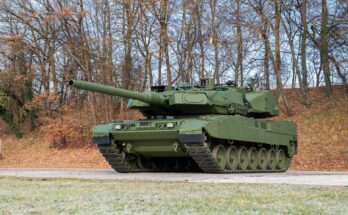
Tension and uncertainty continue to mount in the wake of a U.S. military strike that killed Iranian General Qasem Soleimani and Iraqi militia commander Abu Mahdi al-Muhandis. Tehran has vowed retaliation for the strike, but the scope of a retaliatory strike remains to be seen. A limited operation could fulfill Tehran’s expressed need to hit back without further escalating the conflict, while a more aggressive approach could result in the U.S. taking the next step up the escalation ladder. Neither side is eager for an all-out war, and Iran’s response will be carefully calculated. President Donald Trump has already threatened a possible disproportionate response to any Iranian actions, saying the U.S. had a list of 52 Iranian targets that could be hit.
The attack has also raised questions about the status of U.S. forces in Iraq. Baghdad is weary of its status as the setting of a proxy war, and denounced the strike as a blow against Iraqi sovereignty. At the urging of the caretaker Prime Minister Adel Abdul-Mahdi, Iraq’s Parliament passed a non-binding resolution urging for the expulsion of U.S. troops from the country. There are between 5,000 and 6,000 U.S. troops currently stationed in Iraq. Trump has threatened Iraq with sanctions “like they’ve never seen before” if U.S. troops are forced to leave the country, but it remains to be seen if Baghdad will actually follow through on the mandate.
The withdrawal of U.S. troops from Iraq would hinder counter-ISIS operations, but that mission has already taken a back-seat as U.S. forces focus on protecting military bases and coalition forces from potential attacks by Iran or Iranian-backed militias. Kataib Hezbollah, the paramilitary group whose leader was killed in the U.S. strike, has warned Iraqi troops to stay clear of U.S. bases, heightening concerns of an attack.
At the same time, the U.S. is sending over 4,000 additional troops to the region as a precautionary measure. Around 700 of those troops were already being deployed after a December 27 rocket attack by an Iranian-backed militia and subsequent protests outside the U.S. Embassy in Baghdad that followed U.S. strikes against the militia. These deployments should not be viewed as the U.S. gearing up for an offensive. Rather, the additional troops will take a defensive posture. The U.S. has as many as 65,000+ troops in the Middle East, with the largest contingents in Afghanistan, Kuwait, Qatar, and Iraq.
The U.S. bolstered its presence in the region during the second half of 2019 over tensions with Iran, having deployed some 14,000 additional troops. The U.S. announced a number of deployments to the Middle East back in May, including a carrier strike group, Patriot missile defense batteries, and B-52 bombers. Another six B-52s have now been deployed to Diego Garcia in the Indian Ocean, which could theoretically be used in a conflict with Iran. All of these troop and equipment movements are intended to provide increased response options, but they also serve as a show of force to sway Iran away from overstepping. But they should not be viewed as a buildup for a large-scale offensive operation.
Further complicating matters is the mixed response by Congress. The president is facing pressure from Democratic lawmakers who argue that military action should not be taken without the approval of Congress. Trump has support within his party, however. Senate Armed Services Committee Chairman Senator Jim Inhofe said the attack on Soleimani was justified, and Senator Lindsey Graham said he would oppose any effort by Democrats to use the War Powers Act to limit the president’s response options. The conflict brings foreign policy to the forefront of the current election cycle at a time when the U.S. has been trying to shift its gaze to the Asia-Pacific region.
Shaun's deep-rooted interest in military equipment continues in his role as a senior defense analyst with a focus on the United States. He played an integral role in the development of Forecast International's U.S. Defense Budget Forecast, an interactive online product that tracks Pentagon acquisition programs throughout the congressional budget process. As editor of International Military Markets – North America, Shaun has cultivated a deep understanding of the vast defense markets in the United States and Canada. He is a regular contributor to Forecast International's Defense & Security Monitor blog and has co-authored white papers on global defense spending and various military programs.




